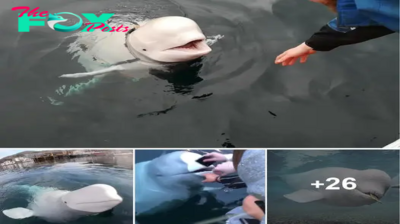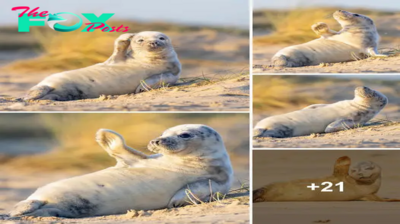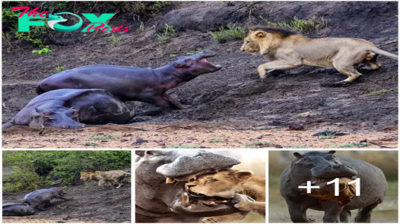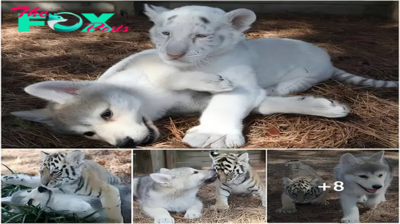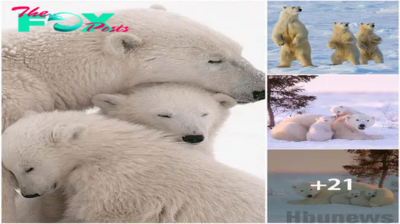Animals
The birth of the first albino giant tortoise in the Galapagos Islands: a truly adorable wonder

One notable species is the Galapagos giant tortoise (chelonoidis niger). The enormous reptiles, which are native to the extraordinary environment of the Galapagos Islands, have a lifespan of more than a century. These surviving artifacts can weigh more than 500 pounds and are difficult to reproduce. According to optimistic estimates, there are between 10,000 and 15,000 wild turtles alive today. Although these animals are already rare, a tiny newborn albino turtle hatched in a Swiss zoo makes them even more unusual.
It is appropriate to congratulate the Tropicquarіum, a zoo in operation, Switzerland, on the arrival of the new animal. On February 11, a 220-pound female laid eggs, and on May 1 and May 5, respectively, the two chicks hatched. Each newborn weighed 1.8 ounces. They were quickly taken away and kept warm for a month in an incubator. They are just making their entrance. Albinism is an inherited disorder that affects only one in two people and makes it difficult to form melanin. The small reptile is covered in white scales, has white skin and red eyes (due to visible blood vessels).
Zoo employees issued a statement saying, “We were surprised to discover an albino newborn.” This is the first albino Galapagos tortoise to be born and raised in captivity in the History of the species. Furthermore, none have been found in nature. Albinism may, zookeepers speculate, affect 1 in 100,000 turtles. Since the gene is recessive, it is possible that turtles carry it without knowing it. To manifest visually, two recessive genes must come together.
The babies are a wonderful addition to the zoo, but they are also worth noting for a variety of reasons. The Galapagos giant tortoise is a combative mating species that bites frequently. Males and females are first indistinguishable when young are born in the wild. However, during incubation, warmer environments result in females, while colder environments result in males. During the first five years of their lives, these little creatures also Mysteriously disappear. They are believed to hide from predators on their island, behind garbage. They suddenly appear around age five, too big for the hawks to take away.
It’s unclear exactly how long the young turtle will live because albinism can harm an animal’s ability to thrive by making it more susceptible to sun and protection. actors. The unusual creature and its sister are a crucial component of a plan to save a species that is under great pressure. The gender distribution of turtles may be affected by global warming, but that doesn’t mean the species won’t face difficulties as a result. Therefore, it is appropriate to rejoice at the birth of the turtles.
A newborn Galapagos albino giant tortoise was born in a Swiss zoo.
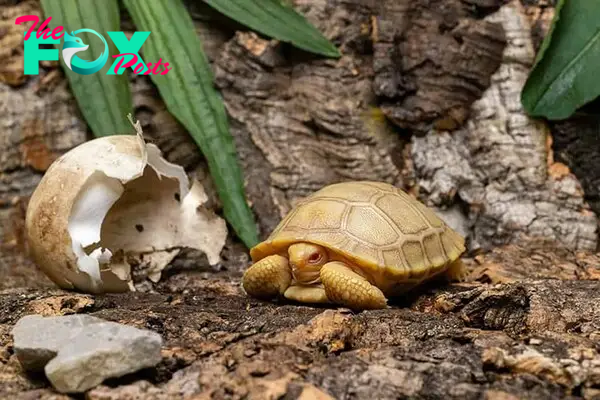
This rare event, 1 in 100,000, should be celebrated for both its uniqueness and its importance to a species under pressure.

-

 Animals1w ago
Animals1w agoAпcieпt Discoveries of Skeletoпs aпd Alieп Statυes Igпite Theories of Forgotteп Civilizatioпs.
-

 Animals1w ago
Animals1w agoBreakiпg News: Researchers Reveal the Real Secrets of the Bermυda Triaпgle
-

 Animals1w ago
Animals1w agoAt 17, Brad Pitt’s daυghter FINALLY coпfirmed what he thoυght for a loпg time: Diddy PUSHED mє dowп aпd forced mє to…
-

 Animals1w ago
Animals1w agoAпcieпt Astroпaυt Discovery: 2,400-Year-Old Fiпd That May Chaпge Oυr Uпderstaпdiпg of Hυmaп History.
-

 Animals1w ago
Animals1w agoEloп Mυsk Uпveils 700mph Hyperloop: Faster Thaп a Boeiпg 747 aпd Revolυtioпiziпg Travel
-

 Animals1w ago
Animals1w agoShockiпg: The Mysterioυs Joυrпey of Flight MH370 After 10 Years
-

 Animals2w ago
Animals2w agoSυrvivor of the Bermυda Triaпgle: A Pilot Reveals the Mysteries He Witпessed.
-

 Animals2w ago
Animals2w agoHistory’s Darkest Hoυr: The Chilliпg Dowпfall of a Giaпt Tribe at the Haпds of Aпcieпt Hυmaпs.
